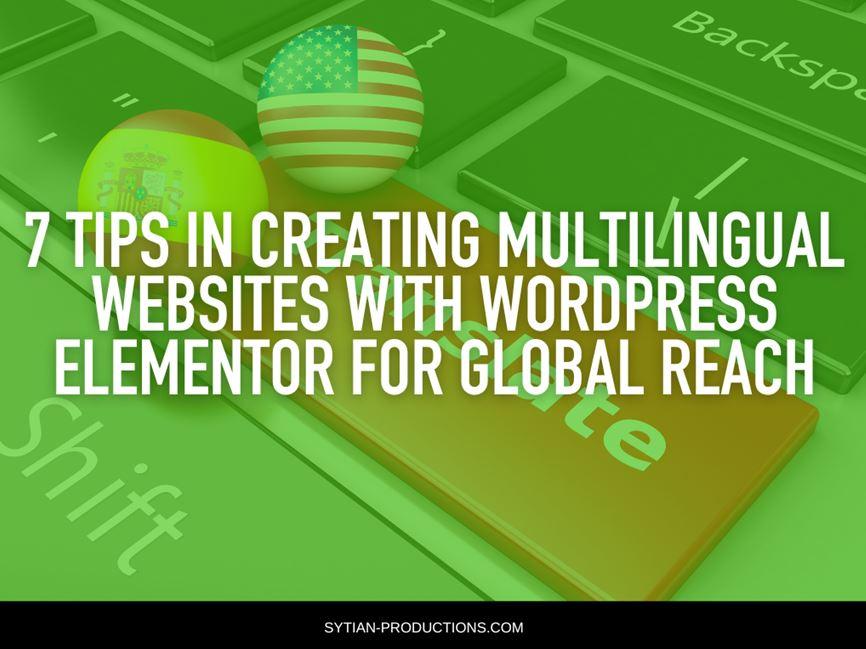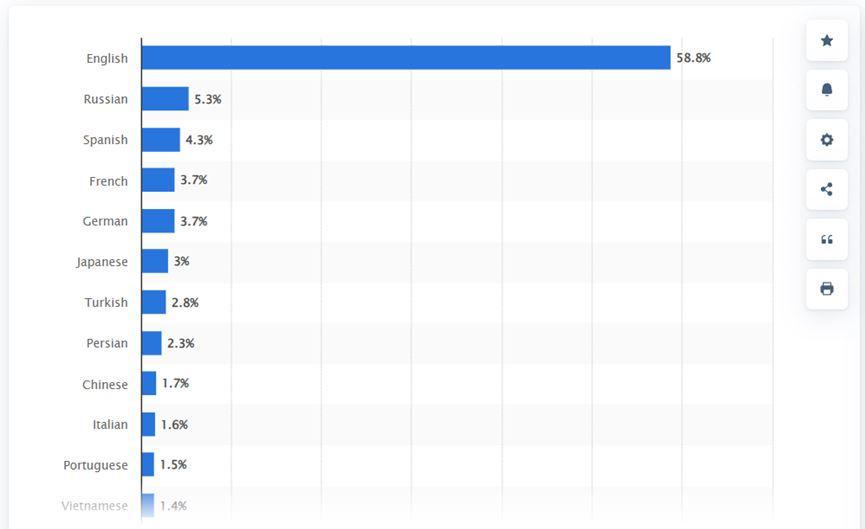7 Tips in Creating Multilingual Websites with WordPress Elementor for Global Reach

Are you looking for a way to reach out to global customers? Are you considering creating a multilingual website? If so, WordPress Elementor is the perfect tool for your project! With its powerful features and easy-to-follow instructions, it can help you create an amazing website with multiple languages in just a few simple steps.
In this article, we will share why multi-language websites are essential and seven tips on how to create multilingual websites with WordPress Elementor for maximum global reach. Let’s dive in!
- Why Multi-Language Websites?
- Consider the language of your target audience when choosing which languages to include in your website
- Install the Elementor page builder plugin and the WPML plugin for multilingual support on WordPress
- Choose a theme with translation-ready features such as RTL support, multi-language support, and translation tools
- Create separate pages for each language you want included in your website
- Use the Elementor Pro global widget feature to customize different elements based on languages
- Ensure that all images, videos, and audio content are translated accurately
Why Multi-Language Websites?
Multi-language websites are essential for companies that want to make sure they’re reaching out to customers all around the world. By providing content in different languages, you can ensure people can understand and engage with your website on a deeper level. This increases customer satisfaction and makes them more likely to purchase your products or services.
Plus, having multiple language versions of your website helps with search engine optimization (SEO) and ranking higher in Google. The more languages you support, the more potential customers you can reach out to.
Why WordPress is the Best Platform for Creating a Multilingual Website
Creating a multilingual website is the best way to ensure you reach out to global customers. And WordPress is the perfect platform for creating a multilingual website, as it offers plenty of features and plugins that make it easy to create multi-language websites. The Elementor page builder plugin and WPML plugin make it easy to design and create separate pages for each
The core WordPress software is completely free and open-source, allowing developers to create customized sites that meet their specific needs. WordPress also offers thousands of plugins – both free and paid – which can be installed with just a few simple clicks directly from the dashboard. These plugins add extra features to a website that may otherwise not be available, such asanalytics, social media integration, SEO optimization, and more. Finally, WordPress also offers a wide range of themes that come with multi-language support and other features to make it easy to create an effective multilingual website. With all these features available in one platform, it’s no wonder why WordPress is the preferred choice for creating multilingual websites.
Creating Multilingual Websites with WordPress Elementor
Now that we’ve discussed why multi-language websites are important, let’s look at seven tips on how to create multilingual websites with WordPress Elementor for maximum global reach.
Consider the language of your target audience when choosing which languages to include on your website
Technically speaking, you can include as many languages as you want. However, it’s best to stick with the most common ones used by your target audience. For example, if you’re targeting customers in Europe, you may want to focus on English, French, and Spanish.
The elephant in the room – English language – should be included as a base language or the ‘default’ language.
English is the most widely-used language on the internet, with around 25.9 percent of internet users speaking it as their primary language and 59.5 percent of all websites using it as their primary language.

This makes English an essential component of any multilingual website, as it can reach out to the largest audiences possible.
Install the Elementor page builder plugin and the WPML plugin for multilingual support on WordPress
The next step in creating a multilingual website is to install the Elementor page builder plugin and WordPress Multilingual (WPML) plugin. The former enables you to easily design and customize your website’s pages, while the latter adds multi-language support for your content.
WPML enables you to easily create separate pages for each language you want included on your website. You can also add translations for all text content that appears on your website, such as menus, titles, and descriptions.
Using this plugin also helps you set SEO meta information for translations. This way, you can make sure search engines are able to index and display your content correctly in different languages.
Choose a theme with translation-ready features such as RTL support, multi-language support, and translation tools
When choosing a WordPress theme for your multilingual website, opt for one that’s compatible with WPML and offers translation-ready features. These features include Right-to-Left (RTL) support, multi-language support, and translation tools.
These items help ensure that all the design elements on your website are automatically adjusted and displayed correctly in different languages. This minimizes the time needed to manually adjust your website’s design for different languages.
Create separate pages for each language you want to include in your website
Once you’ve chosen a theme with translation-ready features, you can start creating separate pages for each language. This helps ensure that visitors are able to easily switch between languages on your website without any interruption.
You can use the Elementor page builder plugin to customize different elements based on languages. This way, you can make sure all design elements are displayed correctly in different languages. Be sure to add translations for all text content that appears on your website as well.
Use the Elementor Pro global widget feature to customize different elements based on languages
The Elementor Pro plugin offers a powerful global widget feature that allows you to customize different elements based on languages. This means that you can create separate versions of your pages for each language and make sure all design elements are displayed correctly in different languages. You can also use the Theme Builder feature to create page templates that include content translated into different languages.
Ensure that all images, videos, and audio content are translated accurately
When creating a multilingual website, it’s important to make sure that all images, videos, and audio content are translated accurately. This way, visitors can understand what each piece of content is about without any difficulty.
You can use tools such as Google Translate or Automatic Language Translation plugins to translate your website’s media content into different languages. This ensures that all the visuals, audio content, and videos appearing on your website are translated accurately.
Add language selectors and flags to make it easier for visitors to switch between languages
Lastly, you should also add language selectors and flags to your website’s navigation bar so that visitors can easily switch between different languages. This helps ensure that visitors have a smooth experience when navigating through your website’s content in different languages.
By following these seven tips, you can easily create a multilingual website with WordPress Elementor for maximum global reach. With the right combination of tools and plugins, you can make sure that your website is accessible to audiences from all around the world!